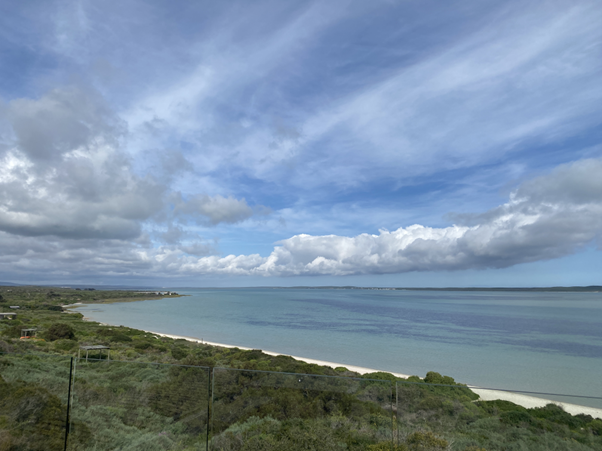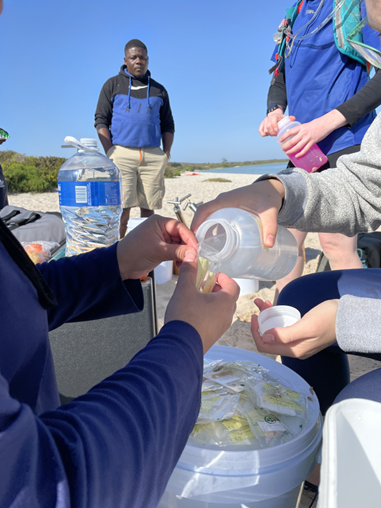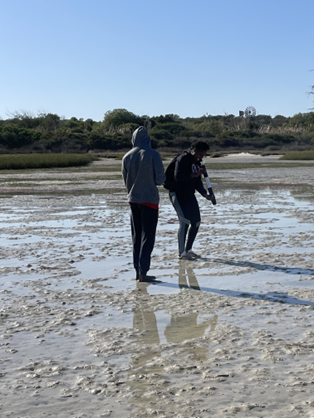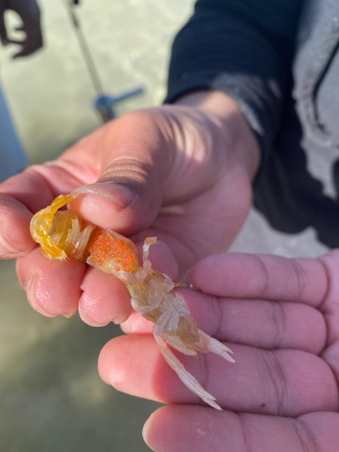Marine biology: estuarine and intertidal ecology
Phone: 021 650 3624
Email: Deena.Pillay@uct.ac.za
Research Interests
My research is aimed at understanding ecological processes that drive multifunctionality in coastal habitats, with a focus on estuarine and lagoonal ecosystems. Through this aim, my research investigates the role of multiple emerging stressors on predominantly benthic processes, while identifying biological interactions that may enhance resilience. My research currently is split between two large projects - the first aims to understand consequences of recreational bait collecting and trampling for benthic populations, communities, and ecosystem processes in Langebaan Lagoon. This project involves collaboration between Prof Ursula Scharler (University of KwaZulu-Natal), Assoc Prof Agnes Karlsson (Stockholm University, Sweden) and Assoc Prof Candida Savage (Otago University, New Zealand). The second project aims to quantify levels of persistent pollutants in selected embayments along the South African coastline to determine effects on ecosystem functions and key functional groups. This project is carried out with Prof Leslie Petrik (University of the Western Cape) as a collaborator.
Selected publications (last 5 years)
Thomas, C. M., de Cerff, C., Maniel, G. A. V., Oyatoye, A. E., Rocke, E., Marco, H. G., & Pillay, D. (2023). Water filtration by endobenthic sandprawns enhances resilience against eutrophication under experimental global change conditions. Scientific Reports, 13(1), 19067.
Lewis, J., Collison, J. and Pillay, D., 2022. Effects of COVID-19 lockdowns on shorebird assemblages in an urban South African sandy beach ecosystem. Scientific Reports, 12(1), p.5088.
Qwabe, W. and Pillay, D., 2022. Bentho-pelagic mismatches in intertidal sandflats in relation to seasonal upwelling: the role of endobenthic ecosystem engineering. Marine Ecology Progress Series, 684, pp.21-36.
Normark, L.K., Liénart, C., Pillay, D., Garbaras, A., Savage, C. and Karlson, A.M., 2022. Isotopic niche size variability in an ecosystem engineer along a disturbance gradient in a South African lagoon. Marine and Environmental Research, 173, p.105541.
Beltrand, M., Dineen, A., Hitzeroth, C., Baum, B., de Cerff, C., de Vos, C., Lewis, J., Zaroufis, S. and Pillay, D., 2022. Warming effects on two autogenic engineers (Zostera capensis and Gracilaria gracilis): Consequences for macrofaunal assemblages and benthic heterogeneity in intertidal sandflat ecosystems. Estuaries and Coasts, 45, pp.247-259.
Dawson, J., Pillay, D., Perissinotto, R. and Richoux, N.B., 2020. Fatty acid analyses provide novel insights on hippo defecation and consequences for aquatic food webs. Scientific Reports, 10(1), p.12039.
Venter, O., Pillay, D. and Prayag, K., 2020. Water filtration by burrowing sandprawns provides novel insights on endobenthic engineering and solutions for eutrophication. Scientific Reports, 10(1), p.1913.
Current Students
Post Doc
- Dr Charles Abimbola Faseyi: developing ecosystem metrics to evaluate and manage consequences of recreational bait collecting and trampling.
PhD
- Cheryl Thomas: interactive effects of warming, eutrophication and sandprawn ecosystem engineering on bentho-pelagic coupling – a mesocosm approach.
- Martin Emanuel: warming and grazing effects on high shore sedimentary systems
MSc
- Olivia Murgatroyd: Persistent pharmaceutical concentrations in an urban Western Cape Estuary and the effects on microalgal assemblages
- Kelly Gilmour: Eutrophication in the Zandvlei Estuary and the role of macrophytes as nutrient sinks and sources
- Geena Williams: Benthic community responses to recreational bait collecting and trampling.
- Kezia Madell: Assessing the effects of trampling and bait-collecting on population, morphological and reproductive metrics of a key ecosystem engineer (Kraussillichirus krauss)





